Treatment of LAD Coronary Aneurysm
by
Carlos Fava
April 8, 2013Operator(s)
Oscar Mendiz, MD; Carlos Fava, MD
Affiliation
University Hospital Favaloro Foundation, Buenos Aires, Argentina
Facility / Institute
University Hospital Favaloro Foundation, Buenos Aires, Argentina
Clinical History
A 71 year old man with hypertension, dyslipemia. and type II diabetes mellitus who underwent PCI to LAD and LCX in 20003 presented with class II angina and a stress thallium that showed a severe profusion defect in the anterior wall.
Angiography
LMCA: short, without lesions
LAD: proximal aneurysm (Figure 1) with mild mid and distal lesions; the first diagonal branch had a severe ostial lesion
LCx; proximal and mid stenosis
RCA: dominant with moderate lesion in the mid portion (Figure 2)
LAD: proximal aneurysm (Figure 1) with mild mid and distal lesions; the first diagonal branch had a severe ostial lesion
LCx; proximal and mid stenosis
RCA: dominant with moderate lesion in the mid portion (Figure 2)
Procedure
The LMCA was engaged with a 6Fr XB guiding catheter through the right femoral approach. One 0.0014” BMW guidewire was advanced to the LAD and another to first diagonal. Then the first diagonal lesion was predilated with a 2.5x12 mm balloon at 10atm (Figure 3). After that, a 2.5x12 mm Biolimus Eluting Stent (Biomatrix) was deployed at 18atm into the first diagonal branch with inflation of a 2.5x20mm balloon at 10atm in the LAD (Figure 4). To cover the aneurysm; a 3.5xxmm micro mesh covered stent (M-Guard, Inspire MD) was implanted in the LAD at 18atm (Figure 5, Figure 6) followed by kissing balloon dilation to the LAD-first diagonal. In the final angiogram the aneurysm was almost totally occluded (Figure 7, Figure 8)
Conclusion(s) / Result(s)
The patient was discharged the next day taking aspirin and prasugrel. At 6 months, the patient was asymptomatic with normal perfusion and a multi-slice CT Scan showed that LAD aneurysm was closed and that the stents were patent (Figure 9, Figure 10)
Comments/Lessons
Coronary artery aneurysms are rare (0.2% of coronary angiogram), more frequently in men; and they are associated with diabetes, and tobacco and cocaine abuse, specially in young people. Coronary artery aneurysms are related with ACS and AMI. They are usually treated by surgery or a covered stent PTCA, but in this case we show the use of this new stent design.
Conflicts of Interest
None
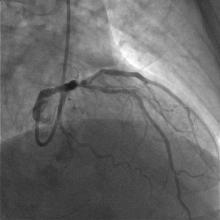
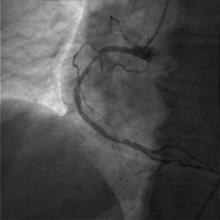
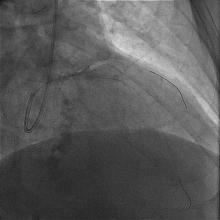
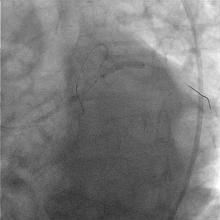
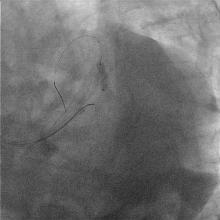
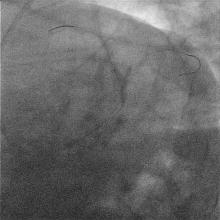
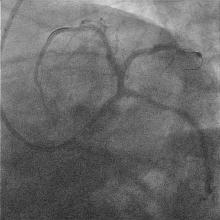
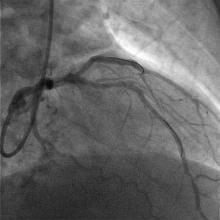
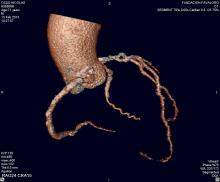
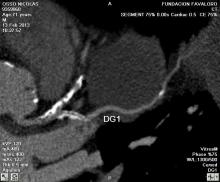
Comments